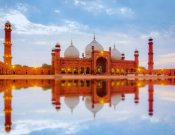Silver Rate in Pakistan
| Location | 10 Grams | 1 Tola |
|---|---|---|
| Pakistan | Rs. 4,882 | Rs. 5,688 |
| Karachi | Rs. 4,882 | Rs. 5,688 |
| Lahore | Rs. 4,882 | Rs. 5,688 |
| Islamabad | Rs. 4,882 | Rs. 5,688 |
| Rawalpindi | Rs. 4,882 | Rs. 5,688 |
| Peshawar | Rs. 4,882 | Rs. 5,688 |
| Quetta | Rs. 4,882 | Rs. 5,688 |
Silver Price in Pakistan
Silver is a highly valuable element with a wide range of uses. It is commonly used in electronics, coins, photography, and most notably, jewelry making. Silver is notable for its exceptional electrical conductivity as an element. While it finds applications in various industries today, its significance and admiration are especially prominent in the form of exquisite jewelry worn on special occasions like festivals and weddings.
Value of Silver
Although gold tends to receive more attention when it comes to precious metals, the fact that silver is also utilized as an investment avenue should not be overlooked. Savvy investors have always been interested in the buying and selling of silver through commodities markets, closely monitoring global macro trends. Prominent silver trading markets can be found in the United States, Europe, London, and Japan. These markets primarily facilitate transactions involving silver bars, coins, and bullions.
In 2009 alone, approximately 40% of the demand for silver was driven by industrial usage. The remaining portion was allocated towards jewelry making, coin production, and international trade purposes. A 2010 survey showed that industries worldwide consumed 487.4 million ounces of silver, with 167 million ounces used for creating jewelry. Additionally, 101.3 million ounces were set aside as investments.
The versatility and desirability of silver make it an essential element in numerous sectors worldwide – both from a practical standpoint as well as an aesthetical one.
Factors Affecting Silver Rates
The price of gold is not fixed and can change depending on various factors. Some of the main factors that affect gold prices are:
-
Demand for silver:
This is the most important factor that influences the price of silver. Demand for silver comes from different sources, such as jewellery, investment, industrial use, central bank reserves, and exchange-traded funds (ETFs). The demand for silver depends on the preferences and needs of consumers and investors in different regions and markets. For example, jewellery demand is higher in countries like India and China, where gold and silver are seen as a symbol of wealth and status.
-
Supply of silver:
This is another major factor that affects the price of silver. Supply of silver comes from different sources, such as mining production, recycling, central bank sales, and official sales by governments or other entities. The availability and cost of mining operations, as well as the efficiency and profitability of recycling processes, play a crucial role in determining the supply of silver. Furthermore, when analyzing silver, it is crucial to consider the policies and regulations established by central banks or governments regarding its buying or selling.
-
Value of the US dollar:
This is a third important factor that affects the price of silver. The value of the US dollar is determined by various factors,such as interest rates, inflation, trade balance,and market sentiment. The price of silver is influenced by the value of the US dollar since silver is predominantly priced in US dollars across global markets. Consequently, a stronger US dollar generally leads to a decrease in the price of silver, and conversely, a weaker US dollar tends to raise the price of silver.
-
Inflation:
This is a fourth important factor that affects the price of silver. Inflation is the slow rise in the costs of goods and services, resulting in a decrease in the buying power of money and a reduction in its value. Inflation affects the price of silver because silver is seen as a hedge against inflation. Silver retains its value over time because it does not lose its purchasing power due to inflation. Therefore, a higher inflation rate tends to increase the price of silver and vice versa.
-
Uncertainty:
This is a fifth important factor that affects the price of silver. Uncertainty refers to a lack of clarity or predictability about future events or outcomes. Uncertainty affects the price of silver because uncertainty creates risk aversion among investors and consumers who prefer to hold safe-haven assets that can protect them from potential losses or losses. Silver is considered a safe-haven asset because it has intrinsic value that does not depend on external factors such as economic conditions or political stability. Therefore, a higher level of uncertainty tends to increase the price of silver and vice versa.
Navigate Site
X

Language mode

تازہ ترین نرخ
- تازہ ترین خبریں




